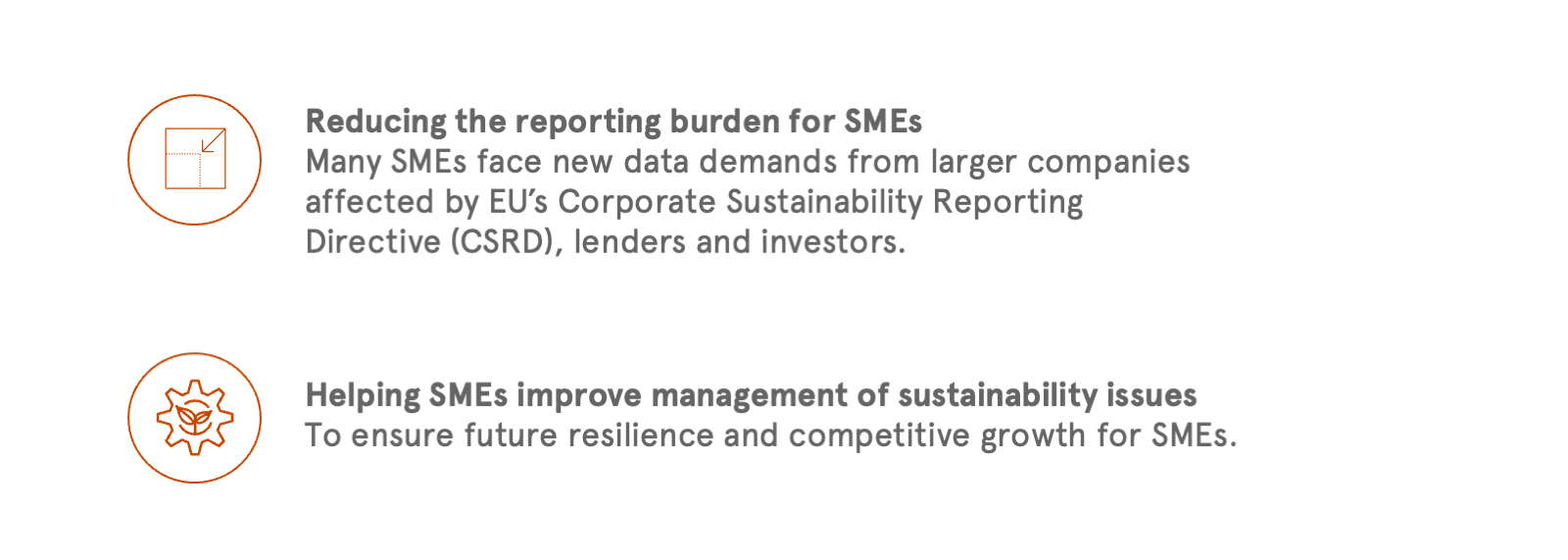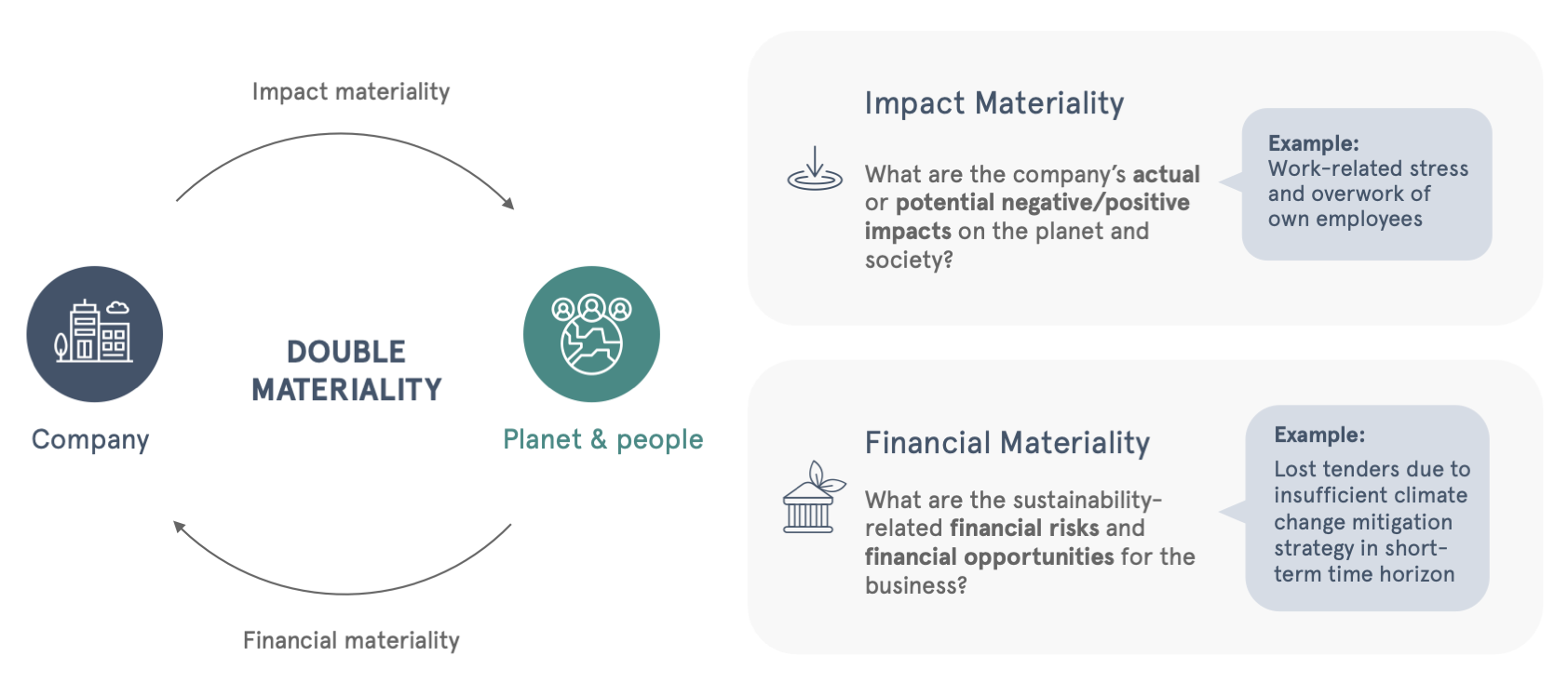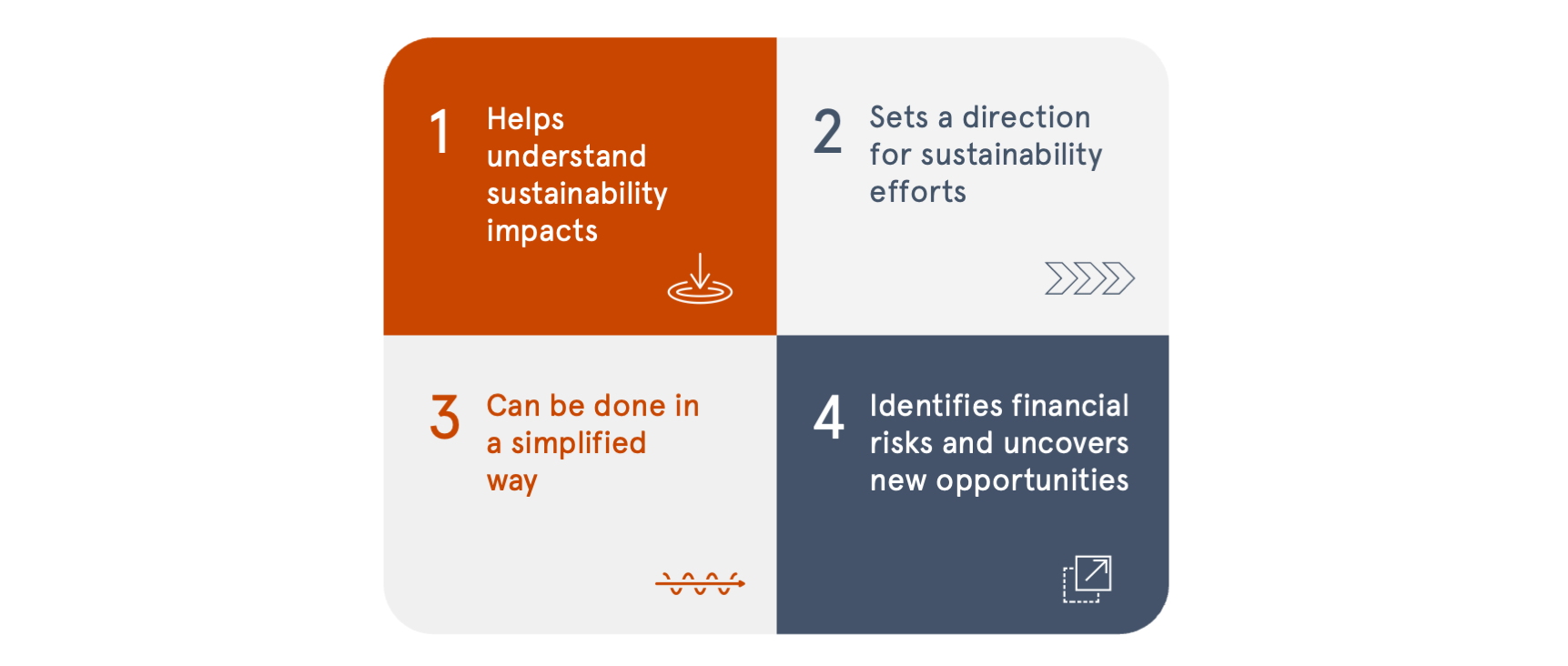
The double materiality assessment is removed in the updated version of EU’s voluntary sustainability reporting standard (VSME), tailored to non-listed small and medium-sized enterprises (SME). We see the DMA as an initial key step for working strategically with sustainability. In this article, we argue why we think it’s worth it for SMEs to conduct a DMA and how it can be done in a simplified and manageable way.
Voluntary reporting framework for SMEs
The VSME is a simplified reporting framework aimed at:

Double materiality excluded from the VSME
The requirement to assess and report on sustainability matters from the double materiality perspective was recently removed from the VSME following a public consultation. Split views on double materiality were heard during the consultation, but critical voices emphasised that a DMA is too complex, difficult and costly for SMEs to prepare. This led EFRAG – the body responsible for drafting EU’s sustainability reporting frameworks – to remove double materiality from the voluntary standard. However, this might not be the last we see of double materiality in the VSME. In future versions of the VSME, EFRAG is considering including a list of SME-tailored sustainability matters that SMEs would have to disclose their material matters based on.

For those not familiar with the concept of double materiality, it essentially asks companies to consider how their activities impact both people and the planet and how sustainability issues can affect their financial well-being. The result of a double materiality assessment is a list of sustainability matters that are deemed important (material) for a company to work on because they pose negative/positive sustainability impacts (impact materiality) or financial risks/opportunities (financial materiality).
Four reasons why double materiality is worth it for SMEs
At Nordic Sustainability, we specialise in double materiality assessments, and we clearly see that it is a valuable exercise for companies regardless of size. Are you an SME yet unconvinced about the benefits of doing a DMA? Allow us to give you four good reasons:

- Helps understand sustainability impacts. The double materiality assessment is an educational exercise. It creates a solid and holistic understanding of a company’s key impacts on environment, people and society, while pinpointing important financial risks to be aware of. It challenges biases, making companies understand where their true impacts are located.
- Sets a direction for sustainability efforts and makes reporting meaningful. SMEs often have fewer resources, and the assessment helps SMEs effectively focus their efforts. Knowing and agreeing on a company’s material sustainability matters makes it easier to create a targeted sustainability strategy and implement the right actions. At the same time, it makes sustainability reporting meaningful. Instead of reporting for the sake of reporting, a company reports on metrics and topics related only to the sustainability matters most relevant to their current and future operations.
- Can be done in a simplified way. A double materiality assessment does not have to be highly complex. We admit that it is not a piece of cake for beginners, but it can be done in a simplified and time-saving manner. One way is to minimise the number of topics assessed from 90+ CSRD-aligned topics to approximately 15 topics by covering overarching matters such as climate change, pollution, biodiversity, workers’ rights and business conduct. Feedback from public consultation suggested EFRAG should provide clear step-by-step guidance for materiality analysis which we agree can reduce complexity and save time for SMEs.
- Identifies financial risks and uncovers new opportunities. Finally, a double materiality assessment unveils financial risks and opportunities related to a company’s negative impacts. For example, the analysis could uncover the use of a scarce material that might become expensive to procure in the future. It could also show that the water bill is expected to rise significantly in five years because one of the company’s productions is in an area exposed to water scarcity. By identifying risks like these, SMEs can think ahead and act to future-proof their business. At the same time, the analysis can also highlight financial opportunities that SMEs can capitalize on through the development of more sustainable products and services that will be in demand.
All in all, we strongly encourage SMEs to embrace double materiality to ensure a focused, strategic and effective approach to sustainability that strengthens business resilience. It did not make this cut of VSME unfortunately, but we will be waiting for its potential return in future updates.
If you have questions about double materiality assessments and how they can be tailored meaningfully to SMEs, you’re welcome to reach out to:
Frederikke Aasted, Head of the SME team
Maria Christensen, VSME Specialist and Senior Consultant in the SME team




